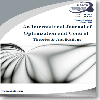Design of an optimal state derivative feedback LQR controller and its application to an offshore steel jacket platform
Design of an optimal state derivative feedback LQR controller and its application to an offshore steel jacket platform
___
- Abdel-Rohman, M.(1996). Structural Control of Steel Jacket Platform. Structural Engineering and Mechanics, 4(2), 125-138.
- Terro, M.J., Mahmoud, M.S., Abdel-Rohman, M. (1999). Multi-loop Feedback Control of Offshore Steel Jacket Platforms. Computers and Structures, 70(2), 188-202.
- Zribi, M., Almutari, N., Abdel-Rohman, M., Terro, M. (2004). Nonlinear and Robust Control Schemes for offshore platforms. Nonlinear Dynamics, 35(1), 61-80.
- Wu, H.Z., Bao-lin, Z., Hui, M.A. (2012). Active Non-Fragile Control for Offshore Steel Jacket Platforms. Proceedings of the 31st Chinese Control Conference, 7481-7486, July 25-27, Hefei, China.
- Mei , X.Y., Bao-Lin, Z., Jian-Cun, W., Xiefu, J. (2016). Fuzzy H∞ Control for Steel Jacket Platforms with Parameter Uncertainties, Proceedings of the 35st Chinese Control Conference, 3749-3754, July 27-29, Chengdu, China.
- Zhang B.L, Ma L., Han Q.L. (2013). Sliding mode H∞ Control for offshore steel jacket platforms subject to nonlinear self excited wave force and external disturbance. Nonlinear Analysis: Real World Applications, 14(1), 163-178.
- Li, H.J., Lan S., Hu, J., Jakubiak, C. (2003). H2 active vibration control for offshore platform subject to wave loading. Journal of Sound and Vibration, 263(4), 709-724.
- Zhang B.L., Hu Y.H., Tang, G.Y. (2012). Stabilization control for offshore steel jacket platforms with actuator time-delays. Nonlinear Dynamics, 70(2), 1593-1603.
- Kwak S.K., Washington G., Yedavalli R.K. (2002). Acceleration-based vibration control of distributed parameter systems using the “reciprocal state-space framework”. Journal of Sound and Vibration, 251(3), 543-557.
- Abdelaziz T.H.S. and Valasek M. (2004). Pole placement for SISO linear systems by state derivative feedback. IEE Proceedings-Control Theory and Applications, 151(4), 377-385.
- Abdelaziz T.H.S. (2009). Robust pole assignment for linear time-invariant systems using statederivative feedback. Journal of Systems and Control Engineering, 223(2), 187-199.
- Abdelaziz T.H.S. (2010). Optimal control using derivative feedback for linear systems. Journal of Systems and Control Engineering 224(2), 187- 202.
- Assunçao E, Teixeira MCM, Faria FA et al. (2007). Robust state derivative feedback LMIbased designs for multivariable linear systems. International Journal of Control, 80(8), 1260- 1270.
- Faria FA, Assunçao E, Teixeira MCM et al. (2009). Robust state derivative pole placement LMI based designs for linear systems. International Journal of Control, 82(1), 1-12.
- Sever M., Yazici H. (2017) Active Control of Vehicle Suspension System Having Driver Model via L2 Gain State Derivative Feedback Controller. 2017 4th International Conference on Electrical and Electronics Engineering (ICEEE 2017), 215- 222, April 8-10,Ankara, Turkey,
- Yazici H, Sever M. (2017). L2 gain state derivative feedback control of uncertain vehicle suspension systems. Journal of Vibration and Control,In Press.
- Aktas A, Sever M, Yazici H. (2016). Gain scheduling LQR control of linear parameter varying overhead crane. In: IEEE 2016 National Conference on Electrical, Electronics and Biomedical Engineering,232-236, Dec 1–3; Bursa, Turkey.
- Sever M, Kaya EE, Arslan MS, Yazici H. (2016). Active trailer braking system design with linear matrix inequalities based multi objective robust LQR controller for vehicle-trailer systems. In: IEEE 2016 Intelligent Vehicles Symposium,726- 731, June 19–22, Gothenburg, Sweeden.
- Yazici H, Sever M. (2017). Active control of a non-linear landing gear system having oleo pneumatic shock absorber using robust linear quadratic regulator approach. Proceedings of the Institution of Mechanical Engineers, Part G: Journal of Aerospace Engineering,In Press.
- Abdelaziz THS, Valasek M. (2005). State derivative feedback by LQR for linear time invariant systems. IFAC Proceeding Volumes, 38(1), 435-440.
- Boyd, S., Ghaoui, L.E., Feron, E., Balakrishnan, V. (1994)Linear Matrix Inequalities in System and Control Theory. Society for Industrial and Applied Mathematics (SIAM), Philadelphia.
- Lin, F. (2007).Robust Control Design an Optimal Control Approach. John Willey&Sons, Hartfordshire.
- Bao-Lin, Z., Han, Q.L. (2014). Network-based Modelling and Active Control for Offshore Steel Jacket Platform with TMD Mechanisms. Journal of Sound and Vibrations, 333(25), 6796-6814.
- Löfberg, J. (2004) Yalmip: A Toolbox for Modeling and Optimization in MATLAB. Proceedings of the CACSD Conference, Taipei, Taiwan.
- Strum, J.F. (1999). Using SeDuMi 1.02 a Matlab for optimization over symmetric cones. Optimization Methods and Software, 11(2), 625- 653.
- Zhao, Y., Sun, W., Gao, H. (2010). Robust control synthesis for seat suspension systems with actuator saturation with time varying input delay. Journal of Sound and Vibration, 329(21), 4335- 4353.
- ISSN: 2146-0957
- Yayın Aralığı: 4
- Yayıncı: Prof. Dr. Ramazan YAMAN
A hybrid QFD-AHP methodology and an application for heating systems in Turkey
Hüseyin BAŞLIGİL, Pelin ALCAN, YAVUZ ÖZDEMİR, Dursun ÇAKRAK
Analysis of rubella disease model with non-local and non-singular fractional derivatives
The structure of one weight linear and cyclic codes over Zr 2 × (Z2 + uZ2)s
Onur CANPOLAT, Halil İbrahim DEMİR
A hybrid approach for the regularized long wave-Burgers equation
Asuman ZEYTİNOĞLU, Bilender P. ALLAHVERDİEV, Murat SARİ
A decoupled Crank-Nicolson time-stepping scheme for thermally coupled magneto-hydrodynamic system
